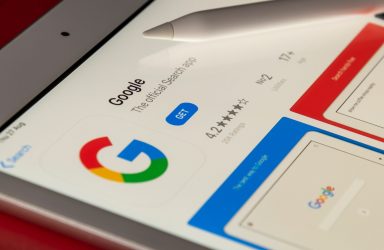Otherwise known as on-page and off-page search engine optimisation, these are the two fundamental components when it comes to organically marketing your brand.
Once you have a list of target keywords or topics that you want your website to rank for, you can get to work on helping users and search engines find your website through a clear SEO strategy. This comes down to on-site and off-site SEO.
Let’s break them down into more detail.
What is on-site SEO?
On-site SEO means optimising elements of your own website, in order to make it search engine friendly. It’s great to have a nice website, but can your target audience actually find it?
In order for your website to be indexed in Search Engine Results Pages (SERPs), search engines need to be able to crawl the website easily to understand the structure and navigation, as well as the content on your site.
Think of it as a similar way in which users need to be able to navigate your website easily to find what they are looking for – as well as providing a good experience. Essentially, the more optimised your website is, the higher chances of ranking.
So what can you optimise to improve your website ranking?
Examples of on-site SEO optimisation
- Content
- Is your content optimised for keywords and topics that you want to rank for? Make sure it includes relevant terms, but don’t go overboard and cram as many keywords as possible in – remember to keep it natural.
- Images
- The amount of websites I come across that haven’t optimised their images is incredible. While it’s not necessarily a high priority, every little helps. Some things to think about; image file name, alt tags, and file size!
- Navigation
- If your website is easy to navigate from a user perspective, then it’s going to be a similar experience for search engines to crawl it too. Are there pages that are difficult to get to? Do you need to click multiple times before you reach certain pages?
- Internal linking
- Similarly to navigation, this helps both users and crawlers to understand the structure of a website, as well as finding related pages on your site. I previously wrote about how important internal linking is as well as the different types of links.
- URL structure
- Using URLs that are SEO-friendly can not only help to improve user experience (giving a clear idea as to what the page is about), but can also be a ranking factor due to using relevant target keywords.
- Page speed
- Slow page load times can result in poor user experience, and there are many tools (such as PageSpeed Insights) to help identify where speed can be improved.
What is off-site SEO?
Off-site SEO (or off-page SEO) is considered to be any activity that drives awareness and referral traffic to your website, aside from advertising.
While it’s vitally important to maintain your website from an SEO perspective; it’s equally as important to keep up a strong brand presence across the internet, as this can help to build trust, as well as authority for your brand and domain. Off-site SEO can be somewhat more challenging than on-site SEO, and may require more effort.
Examples of off-site SEO
- Link building
- This is the foundation of off-site SEO, whereby you gain links from other websites back to your website – and most of the below are examples of link building opportunities. The focus should be on quality over quantity.
- Social media
- There are so many social media platforms these days, and you don’t need to be on every single one. Think about where your audience is, have a presence on those channels and keep them up to date. Make sure your brand and messaging is consistent with your website.
- Press Releases
- These may not always include a link back to your website and are more of an indirect benefit of SEO. If PR’s attract people’s interest, they’ll likely visit your website, or perhaps your social channels, whether there is a link included or not.
- Brand mentions
- Quite simply these are mentions of your brand across the internet. Various tools (such as Google Alerts) can be set up to find brand mentions that could turn into possible link opportunities.
- Influencer marketing
- Working with trusted B2B influencers can result in natural links for your website, as well as the possibility of their followers also sharing your link, getting you further reach.
- Guest blogging
- Essentially publishing an article on someone else’s website, this can be viewed as spammy depending on the context. But, if done right, can result in strong brand positioning as well as traffic to your site.
Is on-site or off-site SEO more important?
It’s important to carry out both on-page and off-page SEO for your brand/website, so that you have the best chances of ranking well in search results. Your efforts should initially be focused on on-site SEO, as your website is the foundation for your SEO strategy and provides a virtual shop front for your business. Off-site SEO helps to give authority to your website, and shows search engines and users alike that your website is trustworthy.
SEO is widely complex and ever-changing, there is no quick fix so it’s important that you don’t expect overnight results. Focus on quality over quantity; measure what you are doing and measure the impact.
Need help with your SEO strategy? Connect with me on LinkedIn and let’s talk.







